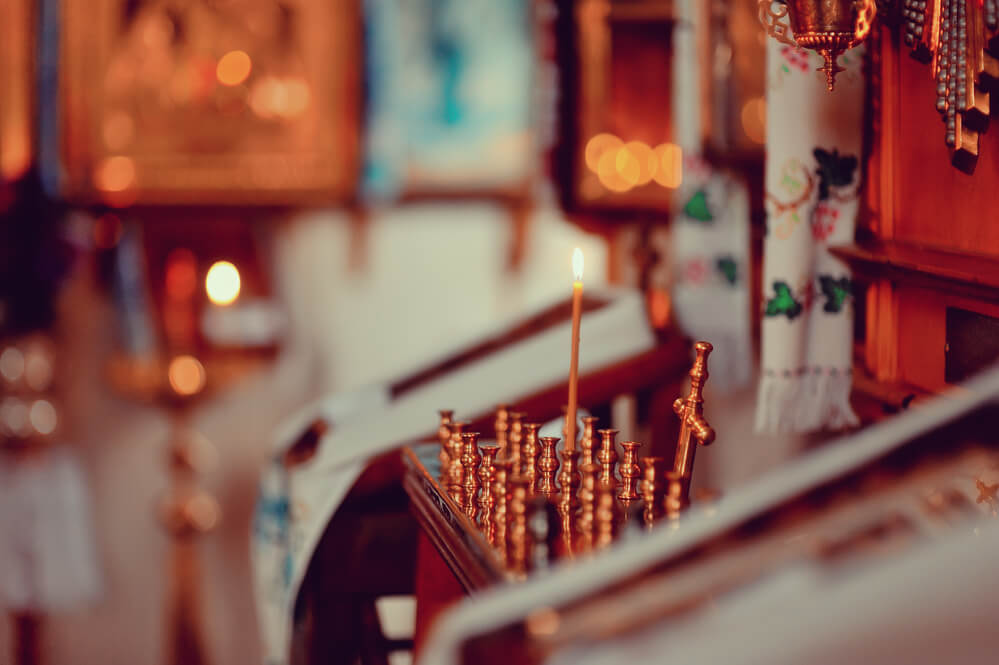A resident of New York can be canonized
Shortly before she was brutally murdered by a military death squad in El Salvador, Sister Maura Clark wrote a letter to her mother in Queens, New York, with a simple request: she needed a pair of shoes.

Фото: Depositphotos
A Bronx-born Catholic nun gave her shoes to a member of her mission at a rebel stronghold in El Salvador, where she helped feed, clothe and train the poor since her arrival in the country four months earlier, in August 1980 of the year, writes The New York Post.
She lived on a scholarship of 100 dollars a month at Chalatenango in the northwest of El Salvador and even shared this money with people she cared about. Her order Maryknoll, based in Ossining, New York, sent Clark to a war-torn country at the request of Oscar Romero, the famous archbishop of San Salvador.
But by the time she arrived, Romero had been killed by government forces who had fought left insurgents, including members of the clergy.
"She knew Romero and answered the call even though Salvador was really dangerous," said Peter Keogh, Clarke's nephew.
Although Clark received death threats, the 49-year-old nun continued to help the poor in the country. And, like Romero, she supported their revolutionary cause. Now her family wants the Catholic Church to recognize her heroism, canonizing a woman, and the same Vatican honored Romero in October.
William Sweeney, pastor of the church of St. Francis de Sale, said that discussions had already taken place.
For years, the long, bureaucratic and costly process of canonization seemed never to succeed. The Clark family was worried that the succession of conservative popes would never consider the canonization of a nun who collaborated with insurgents in Central America.
Now, after Pope Francis came to power in 2013, the Argentine Jesuit and the first Latin American pontiff, who in 1970's himself survived the brutal dictatorship in his country, the situation has changed.
During the recent beatification ceremony for Romero at the Vatican, Francis put on a bloody rope belt that was on Romero at the time of the Mass in a small chapel in El Salvador, where he was shot dead.
Members of the Clark family believe that she did no less for religion and peace.
Mary Elizabeth Clark was born in the Bronx in 1931, she was the eldest daughter of Irish immigrants John and Mary Clark. Her father, the tenth of 12 children, immigrated to New York in 1914, when he was 18 years old, to join an older sister already living in this city, her rich husband owned a local hotel.
But in 1921, John Clark answered the call of the revolution. He was asked to return to his impoverished home country, where his brothers were militants in the Irish Republican Brotherhood, the forerunner of the Irish Republican Army, which waged war against the Irish rulers of Great Britain.
Although the uprising did little to improve the position of poor Irish citizens, John Clark met his future wife, a nurse, who looked after wounded rebels in a nursing home in Dublin. The couple moved to New York and got married in this city in 1930.
Maura grew up in a close family in the Bronx, and then in the Irish enclave in Rockaway, known as the Irish Riviera.
From an early age, the future missionary became radicalized, listening to her father’s memories of his years spent in war in Ireland.
After Maura finished high school at the Stella Maris Academy, an independent 19-year-old girl went to a monastery. Maura chose Maryknolls in Westchester, an order that specializes in missionary work abroad.
Maryknolls was unique and ahead of its time. In addition to teaching Christian doctrine, its members knew how to drive and repair jeeps, how to do injections and major surgeries.
For a while, Clark worked in the poorest parts of the Bronx. By 1959, she was ready for her foreign destination: a poor gold mining town in the jungles of Nicaragua, where opposition to the dictator Anastasio Somose was forming.
She promised to stay away from the uprising, but could not. She knew the women in the parish who had been tortured and raped by government soldiers for participating in the revolution, and helped some of them to complain about the attackers.
When National Guard soldiers attempted to arrest one of her former students—a young man who had joined the Sandinista National Liberation Front—Sister Maura sprang into action, shouting at the soldier and vigorously defending her former student.
During the 17 years spent in Nicaragua, where she organized food and recreational actions and survived the devastating earthquake of 1972 of the year in Managua, Maura’s sisterhood charity turned into activism.
Soon she was sent to El Salvador, where she met her death. The tragic history of the nun is taught to students of Catholic schools, one of which awards an annual academic scholarship to her name.
Four members of the National Guard of El Salvador were convicted of murder in 1984 and sentenced to 30 years in prison. In 1998, they said they acted on "orders from above."
The civil war lasted over ten years in El Salvador and ended in 1992.
Read also on ForumDaily:
Street in Brooklyn renamed in honor of immigrants from Odessa
How do Americans treat those who go to church only at Christmas?
1,5 Millions of Witches and Pagans Live in America
Subscribe to ForumDaily on Google NewsDo you want more important and interesting news about life in the USA and immigration to America? — support us donate! Also subscribe to our page Facebook. Select the “Priority in display” option and read us first. Also, don't forget to subscribe to our РєР ° РЅР ° Р »РІ Telegram and Instagram- there is a lot of interesting things there. And join thousands of readers ForumDaily New York — there you will find a lot of interesting and positive information about life in the metropolis.











